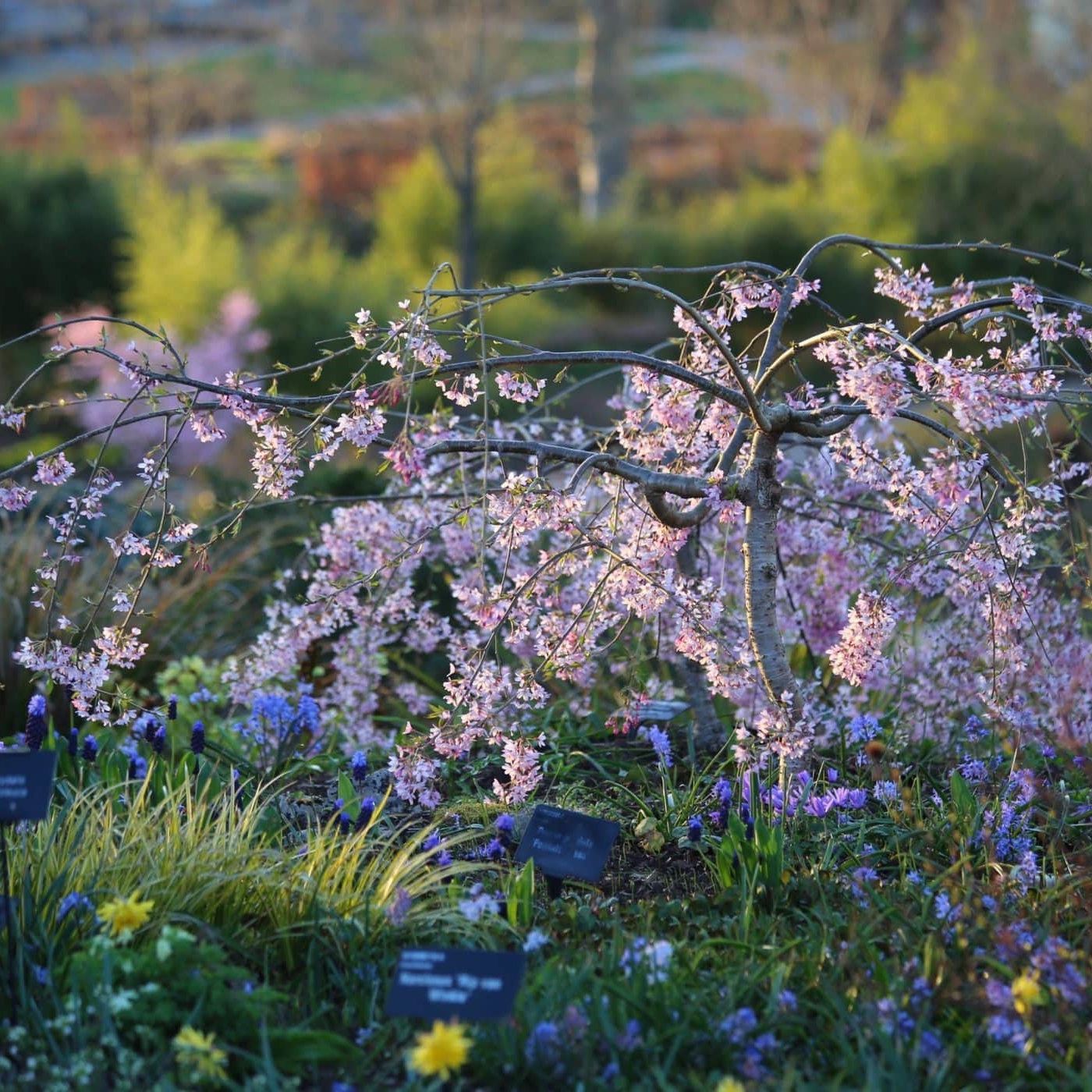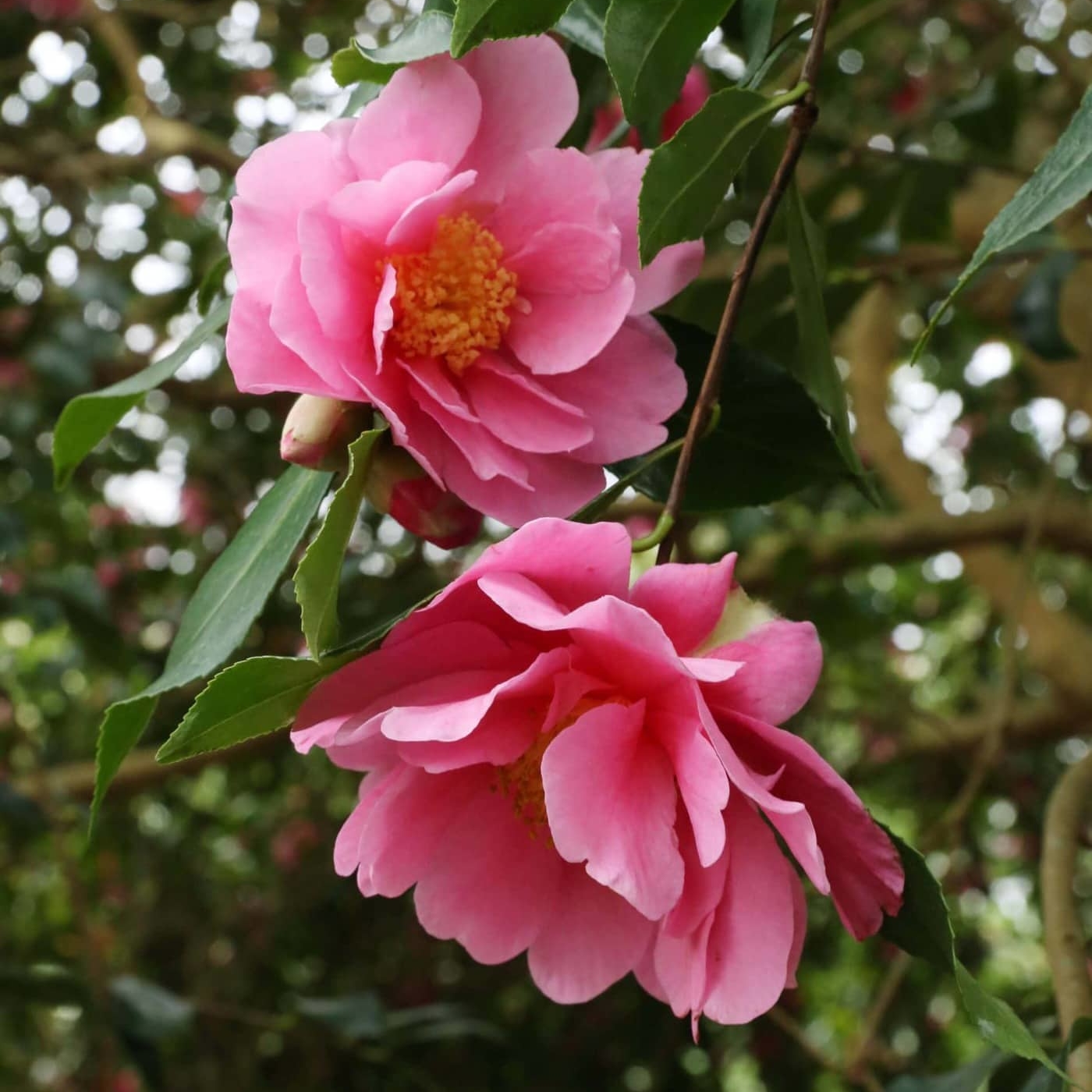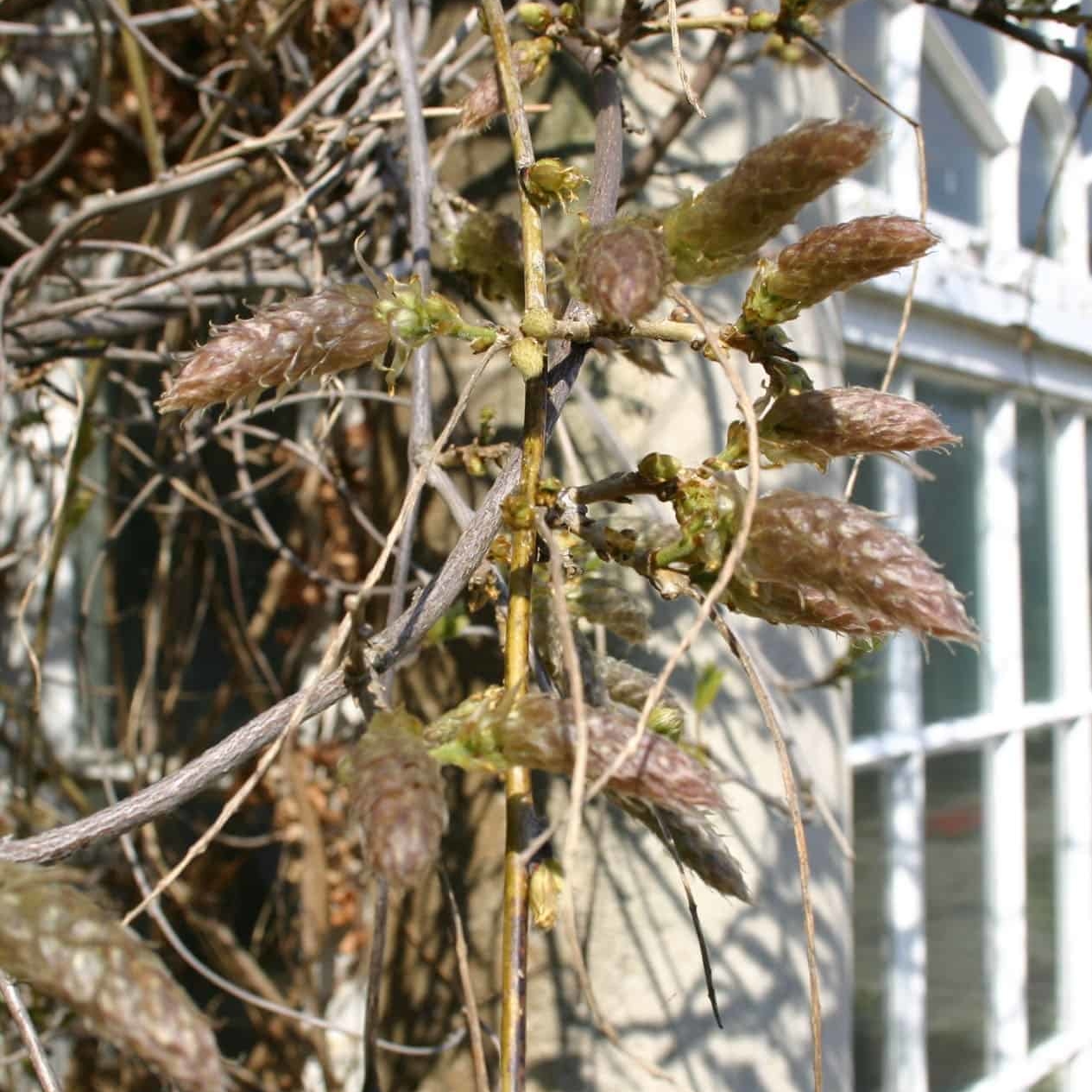Repeat-flowering multi tonal roses
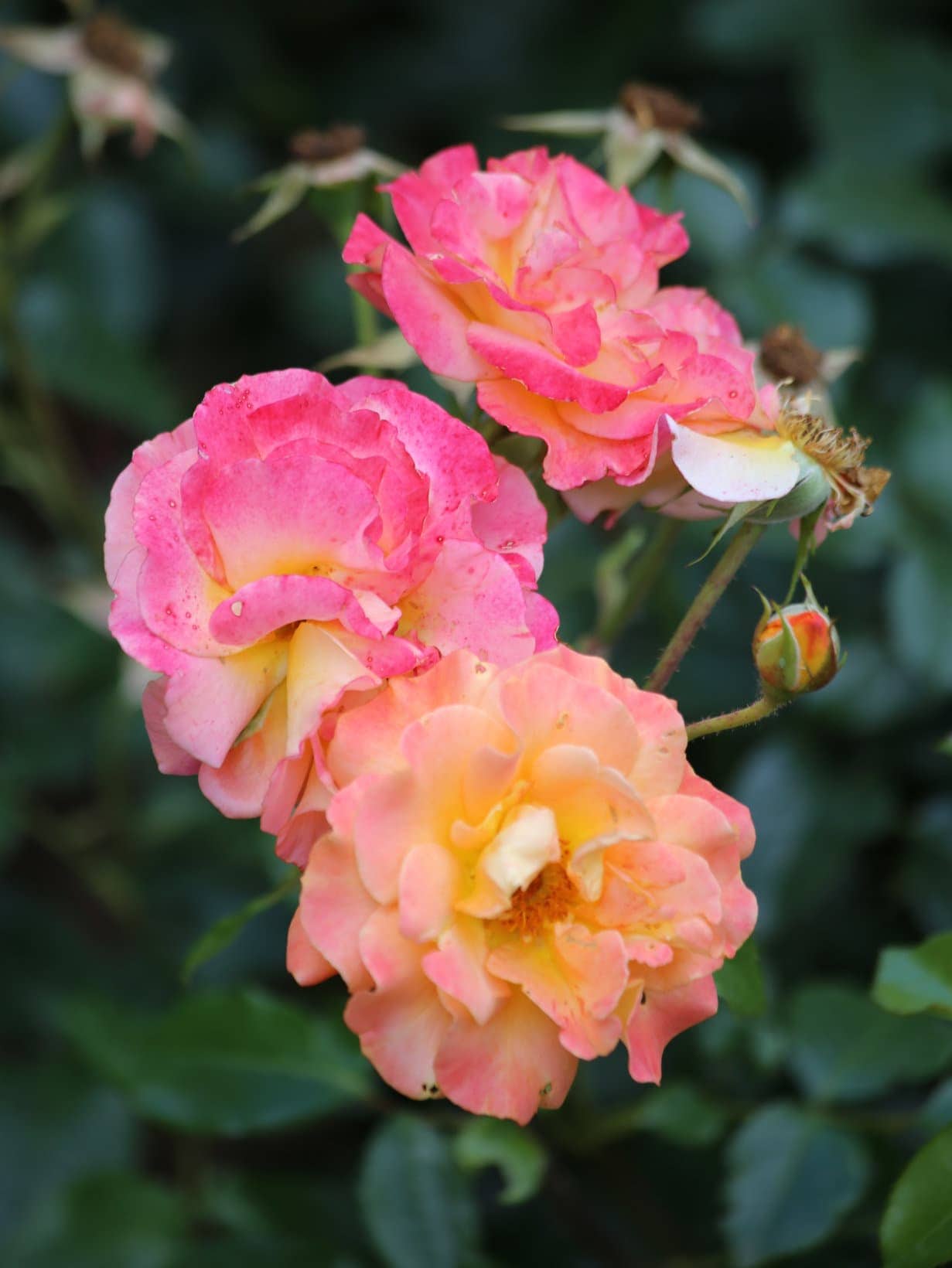
It’s early July, and while the best of the early and old roses have finished flowering, the repeat flowering types have months ahead of them. As their buds emerge and burst, and petals unfurl and slowly decay, the shifting colours of multi tonal repeat-flowering roses makes them a constant source of amazement. Here are nine multi tonal rose cultivars, flowering from June to September at least, with some flowering far beyond that.
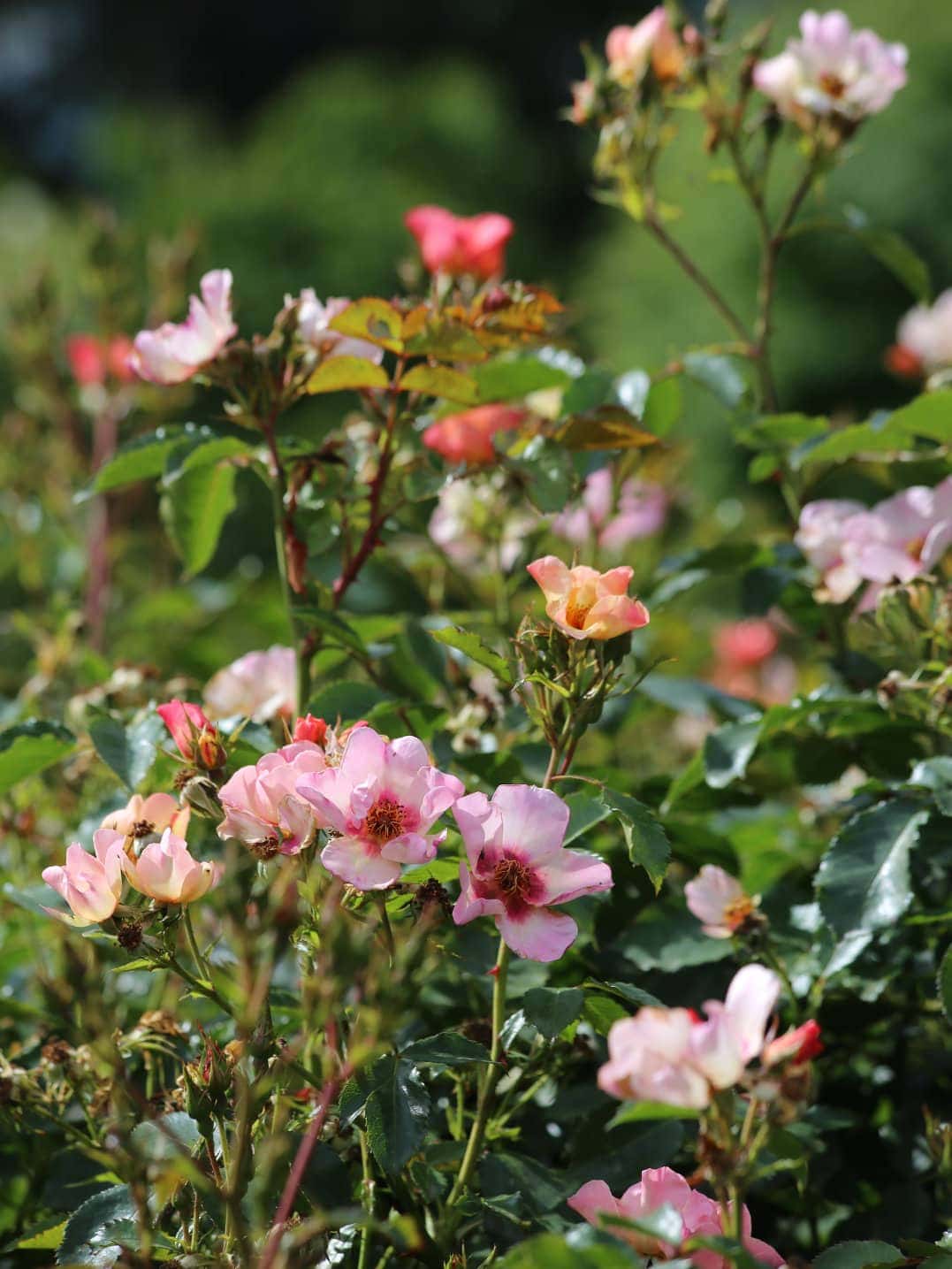
Rosa For Your Eyes Only is one of the many recent hybrids derived from Rosa persica, a very unusual species found in deserts and semi-arid areas of Iran, Afghanistan, through Central Asia and up to western Siberia. It’s mostly seen as a farm weed in its native lands, running on deep suckering roots. The wild species is a thin prickly shrub with blue leaves a bit like sea holly. It has rich yellow flowers with a deep red central ‘eye’, with this central dark blotch being characteristic of all the persica hybrid cultivars, many of which have ‘eye’ in their name.
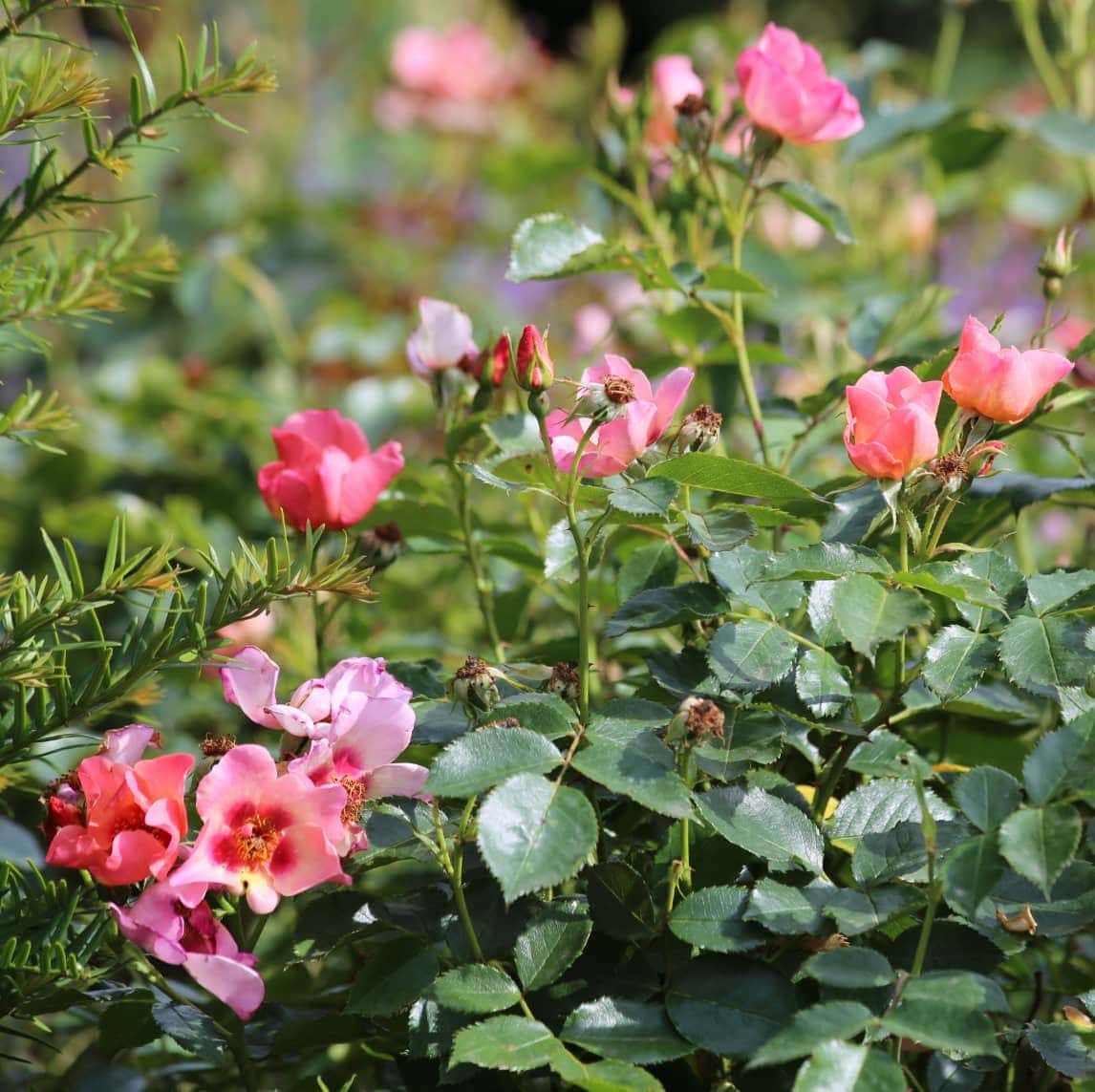
For Your Eyes Only, is perhaps one of the best and most widely available persica hybrid roses, winning 2015 Rose of The Year. The persica hybrids are generally very healthy, easy to grow, long-season repeat flowering, and drought tolerant, given the desert habitat of their parent species. More persica hybrids can be found here and here. I’ve been gathering a small collection of Rosa persica hybrids to trial on my allotment, I’ve a feeling some give a really good winter display of hips too. For Your Eyes Only, Bright As A Button, and some of the Babylon Eyes series are my favourites.
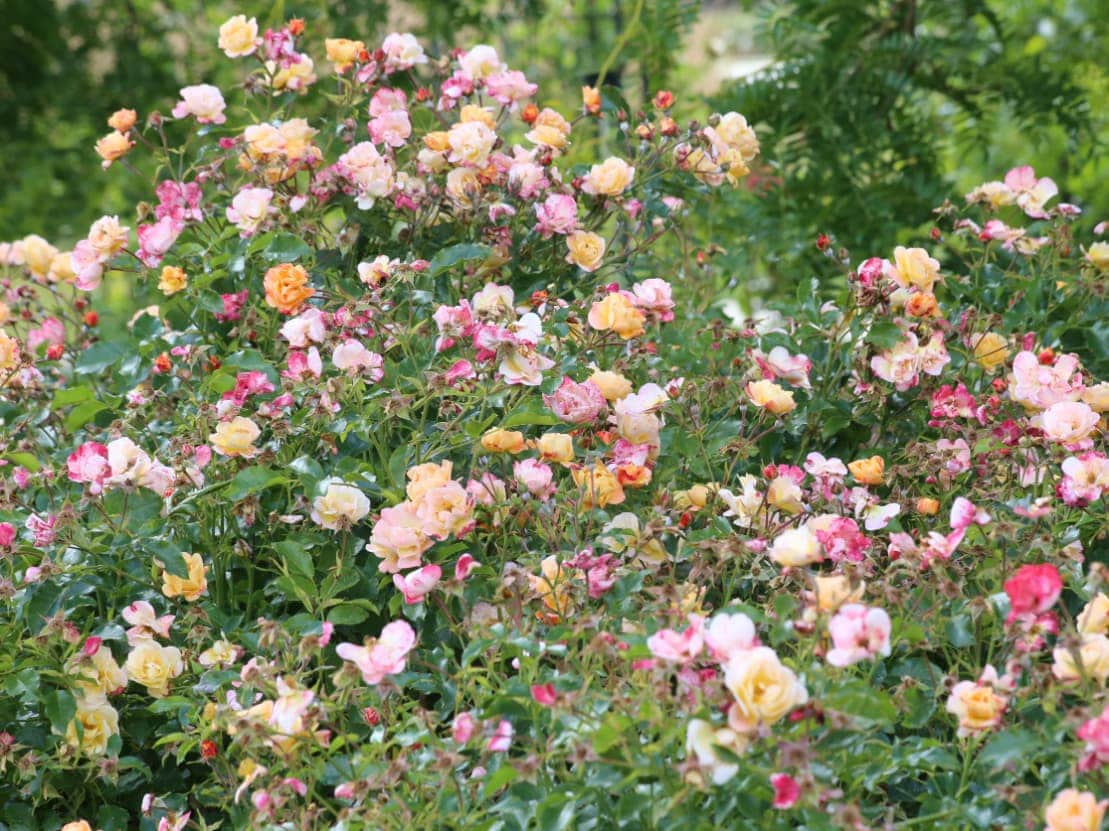
Rosa ‘Flower Carpet Amber’ is a healthy rose, probably the most up right of the Flower Carpet roses. Useful as easy maintenance shrubby groundcover, happy to be hacked back like a hedge.
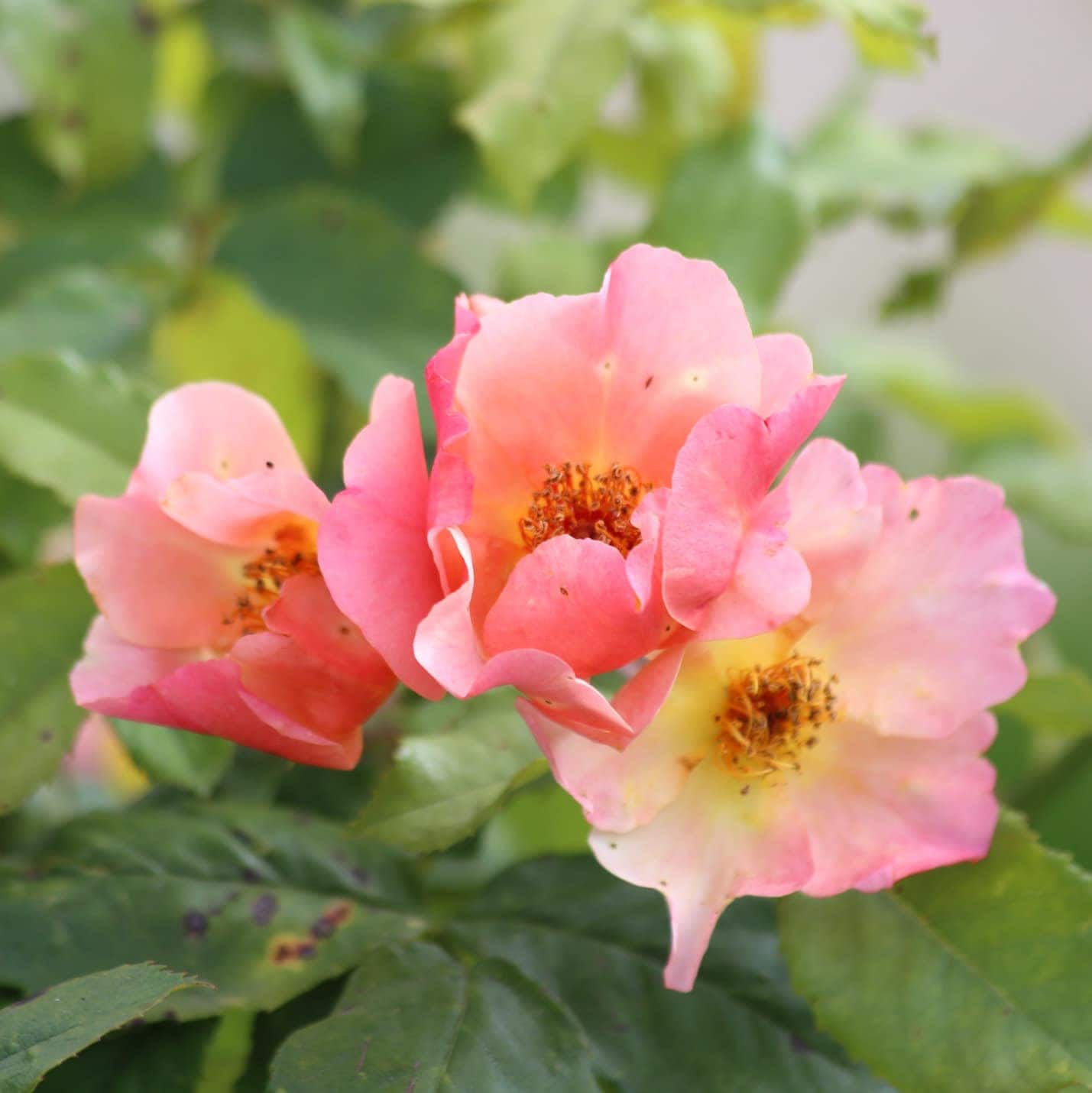
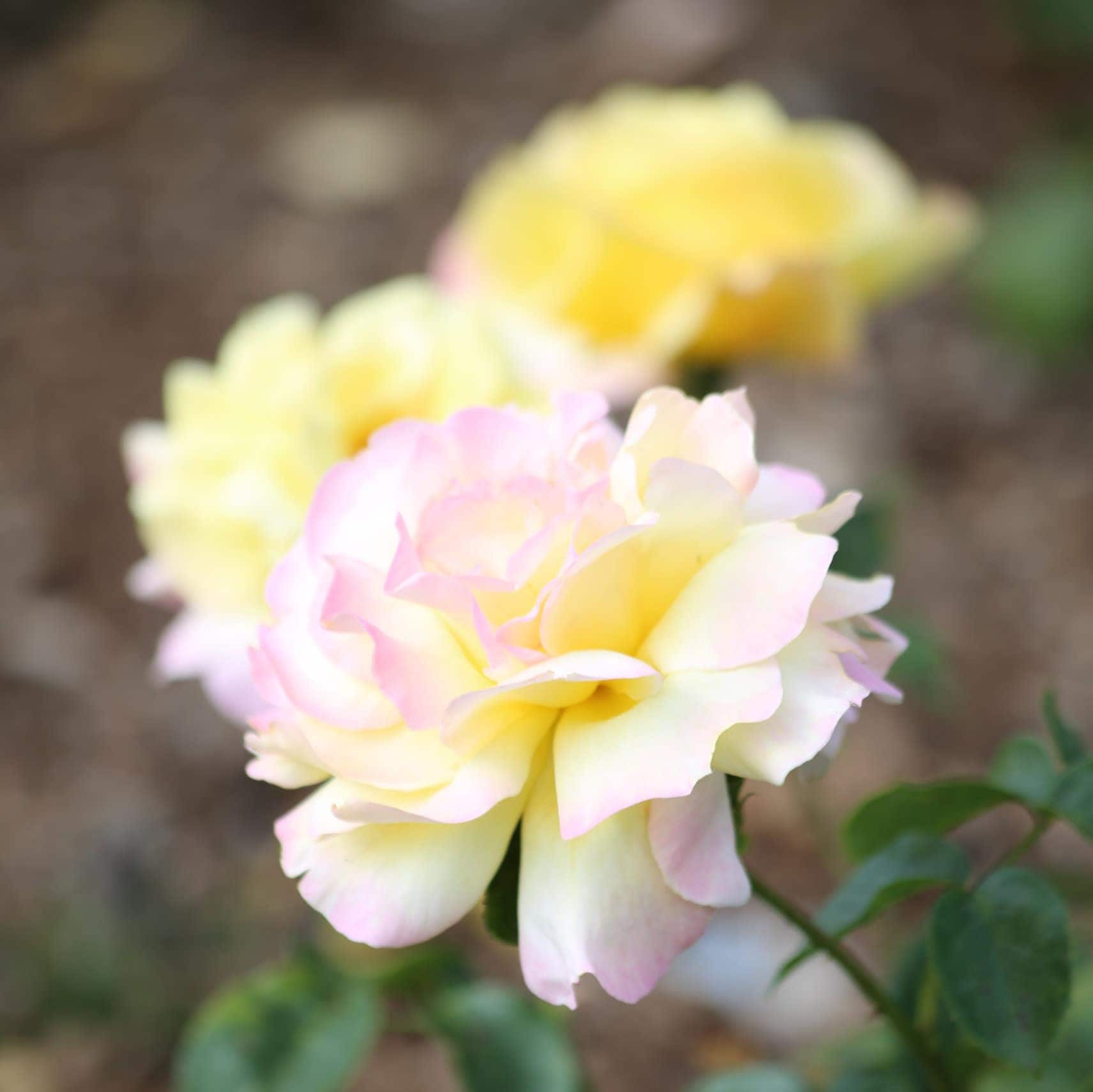
Rosa Peace is perhaps one of the best known and most loved roses of all time. The flower colour varies with soil type, and even the time of day. Peace was developed by French horticulturist Francis Meilland, between 1935 and 1939. Foreseeing the German invasion of France, he sent cuttings to friends in Italy, Turkey, Germany, and the United States, to help ensure the survival of the new rose. In 1945, Peace roses were given to each of the delegations at the first meeting of the United Nations, with a note that read: “We hope the ‘Peace’ rose will influence men’s thoughts for everlasting world peace”.
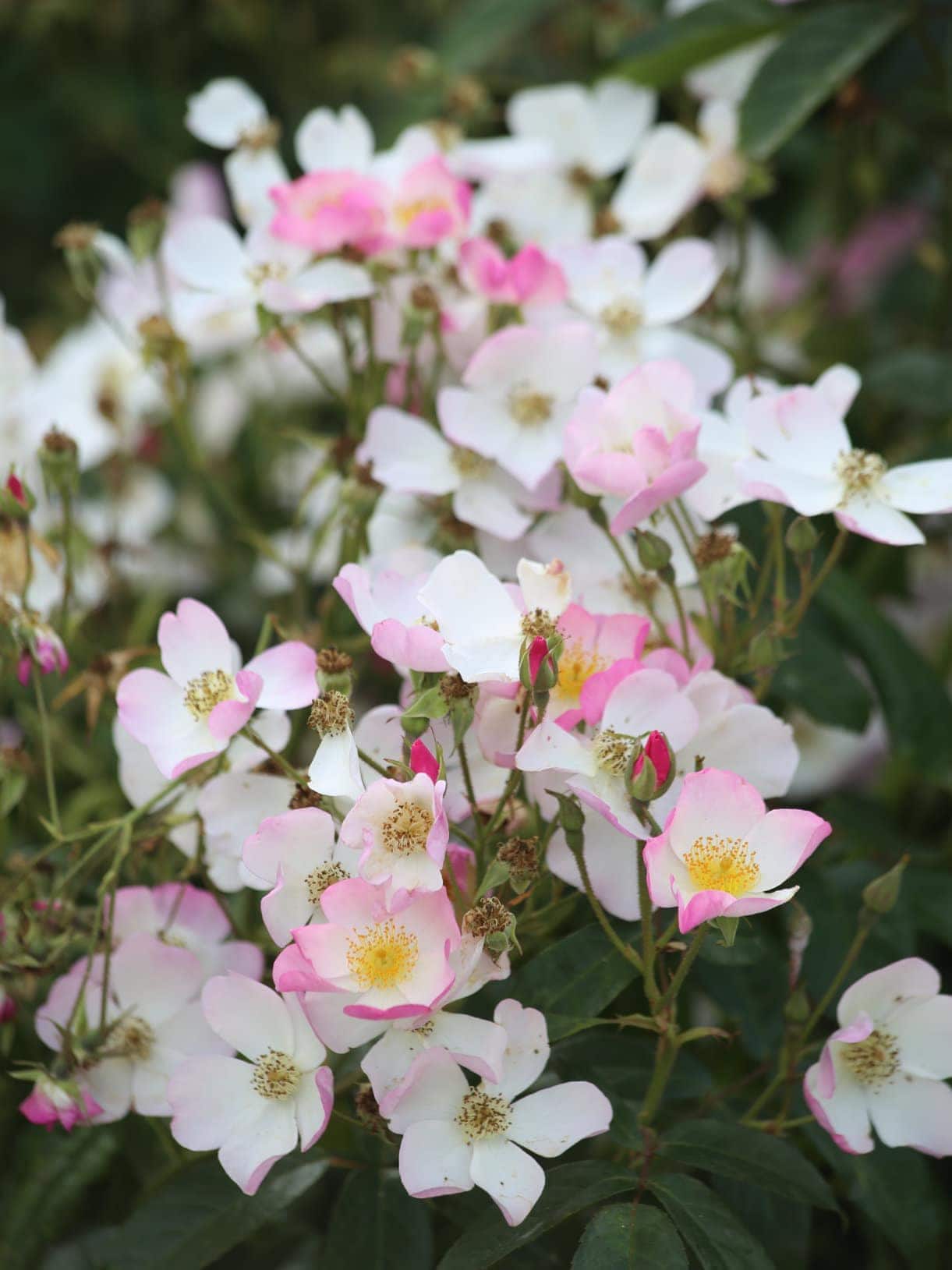
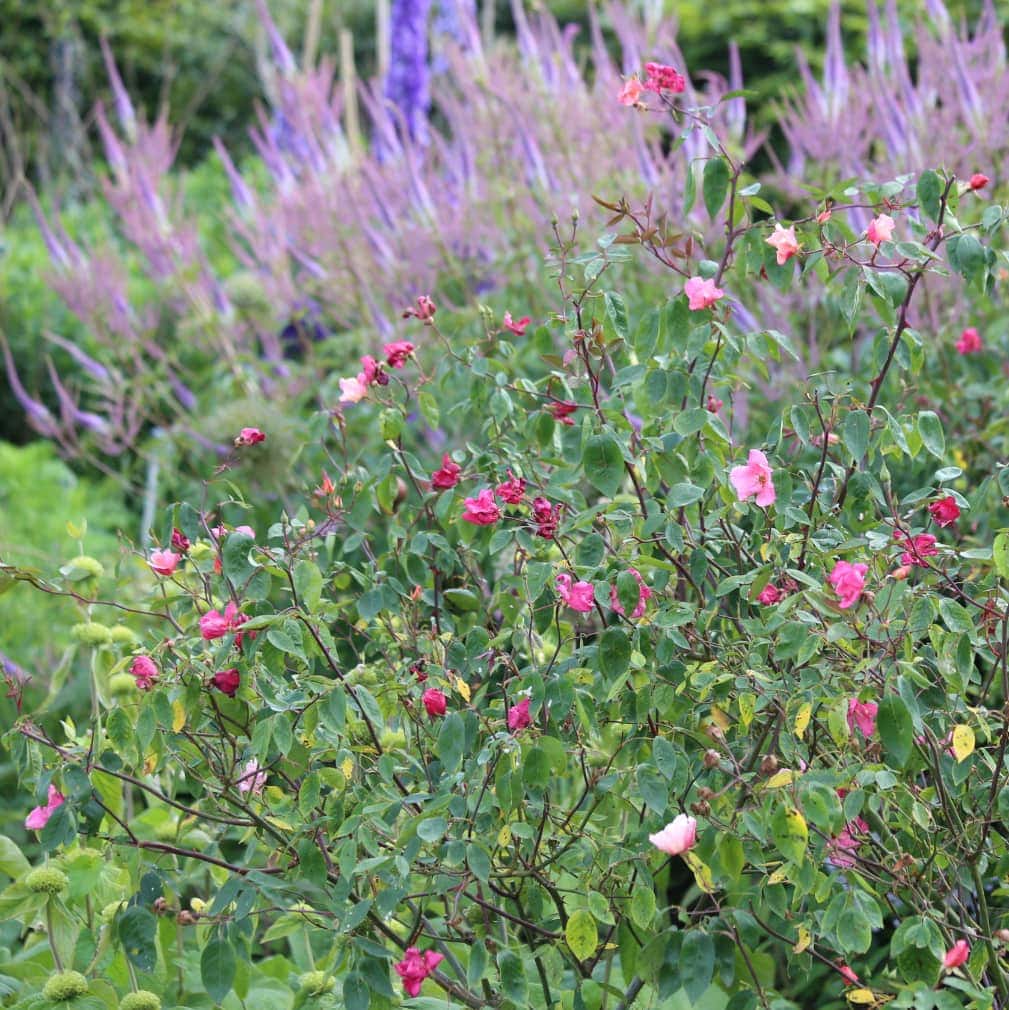
Rosa × odorata ‘Mutabilis’ is a graceful rose with thin, lax, thornless branches, purple young foliage, flowering year-round in mild areas. Flowers are honey-yellow, orange and red, with all colours showing when strong flushes of flowers appear in late spring and summer. A very healthy rose, suited to poor soil, it grows to around 1.8m if supported, or forms a smaller open shrub if not. Sometimes called the ‘butterfly rose’ as the many wispy flowers look like butterflies perched on the branches. This rose has characteristically mysterious origins, possibly an ancient Chinese garden hybrid, but with some forms originating from the wild too. It may be a cross between Rosa gigantea, a huge climbing rose found in the eastern Himalayan foothills, and Rosa chinensis, a medium-sized shrub from Southwest China. Although I think Rosa × odorata ‘Mutabilis’ is pretty much unbeatable, and it’s happily creeping up a south facing wall in my garden, I’ve also got Rosa × odorata ‘Bengal Crimson’ and the related Rosa chinensis ‘Semperflorens’. Both were picked up from Monksilver Nursery at the Dixter Spring Plant Fair, I suspect grown from tip cuttings rather than sturdy hardwood, as these types of roses only produce very thin stems.
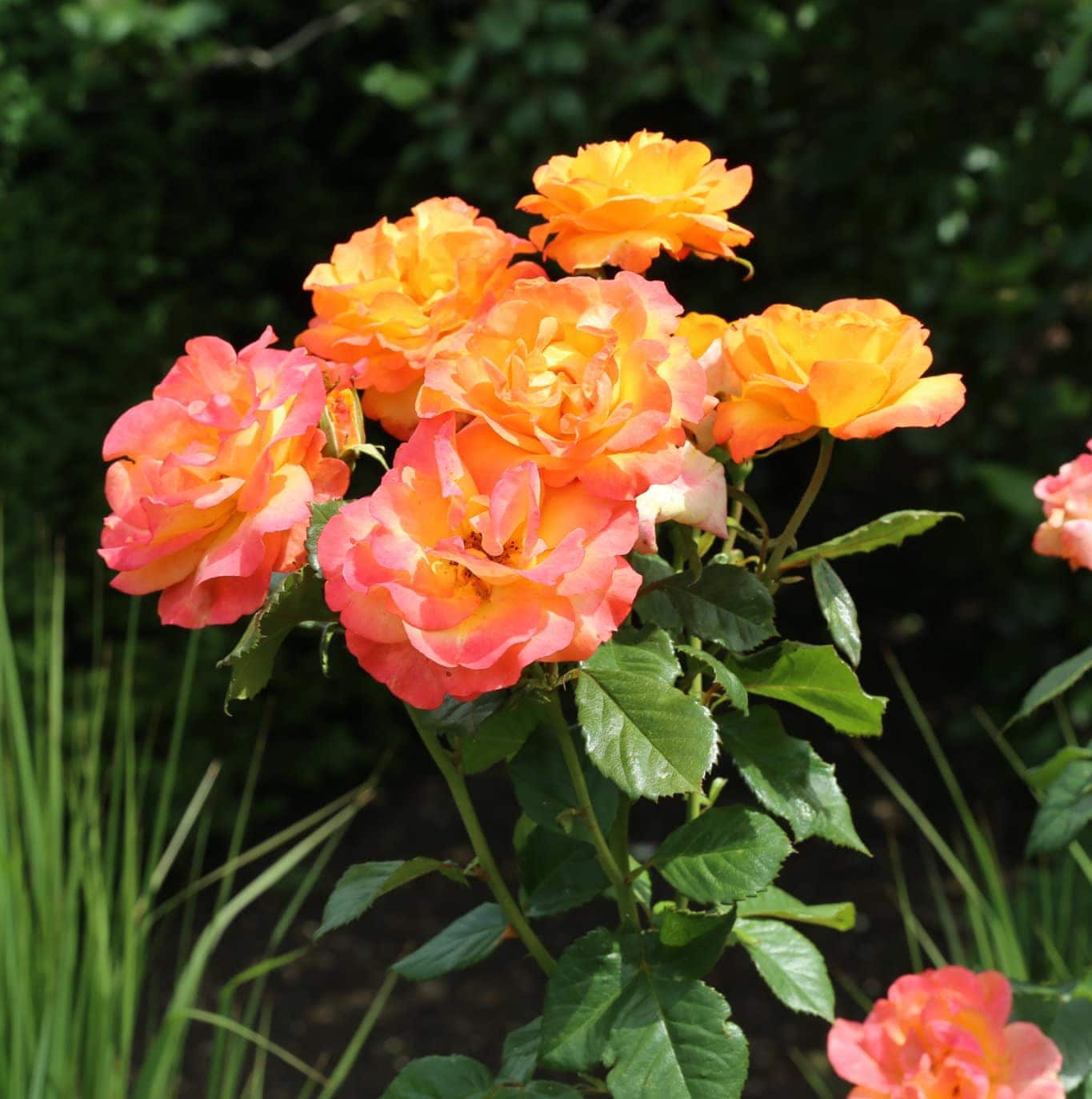
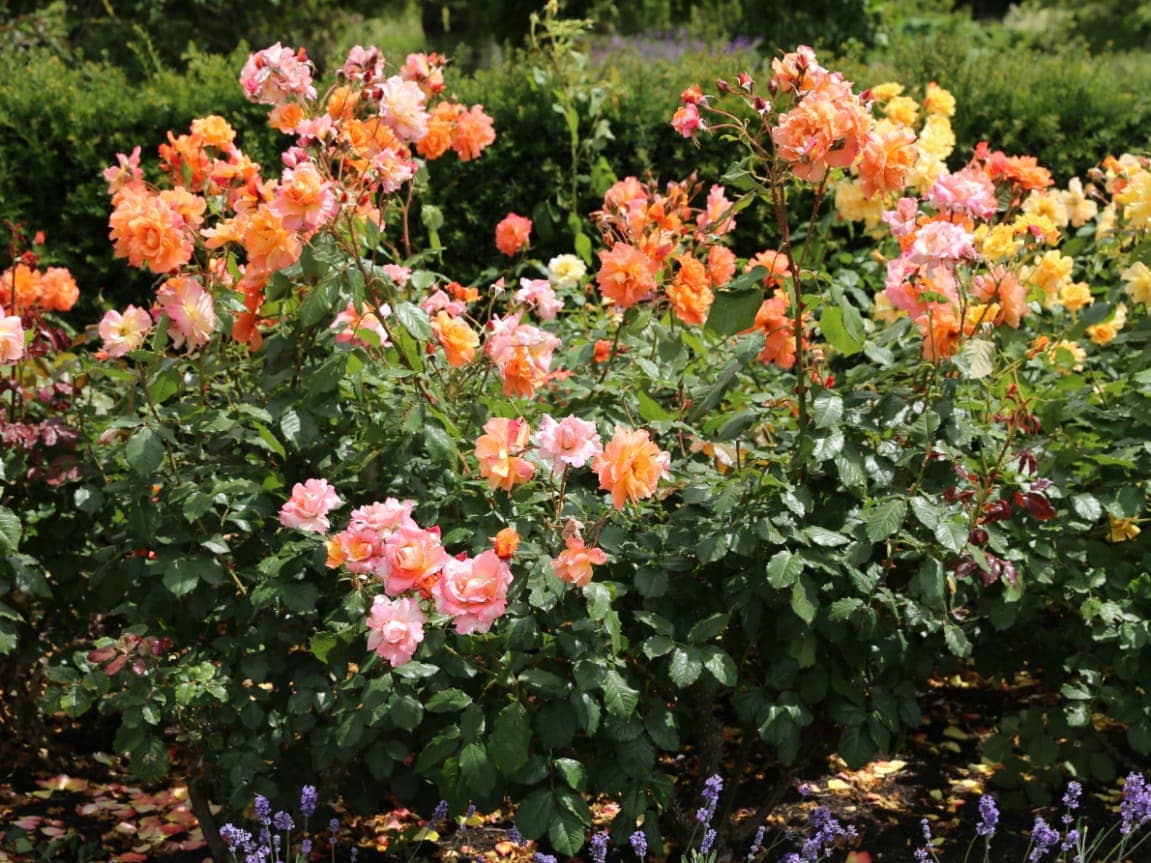
There is such a huge variety of roses available, many people are put off by their bad reputation of being fussy, diseased and high maintenance with need for endless manure mulching. Choose healthy species and cultivars on the wilder side, planted in a good spot, and they’ll take care of themselves. These long-flowering, multi coloured roses, bring as much joy as they do value for money.
All photography by Owen Hayman, at RHS Gardens Wisley and Hyde Hall, July 2022.
Owen Hayman
Owen joined the Bestall & Co planting and aftercare team in spring 2019. He is an RHS qualified horticulturist, holding a full Level 3 Diploma in Horticulture, and recently came in the top 3 at the Northern Regional Final of The Young Horticulturist of the Year 2019. After first doing a foundation diploma in Fine Art, he went on to gain a degree and masters in Plant and Soil Science from the University of Sheffield in 2014. Owen worked as a researcher on various field research projects in Alaska, Panama and Borneo. When not away in the field, he became obsessed with visiting gardens and nurseries across the British Isles and the Netherlands, developing his own garden, and then taking on a walled allotment garden as a personal project. He realised his true passion was in horticulture, and so moved away from academia and into the world of specialist plant nurseries and professional gardening.
Owen is now studying the Wisley Diploma, but continues to write articles for us on a monthly basis, and we're delighted to maintain contact with such a passionate and knowledgable plantsman.

